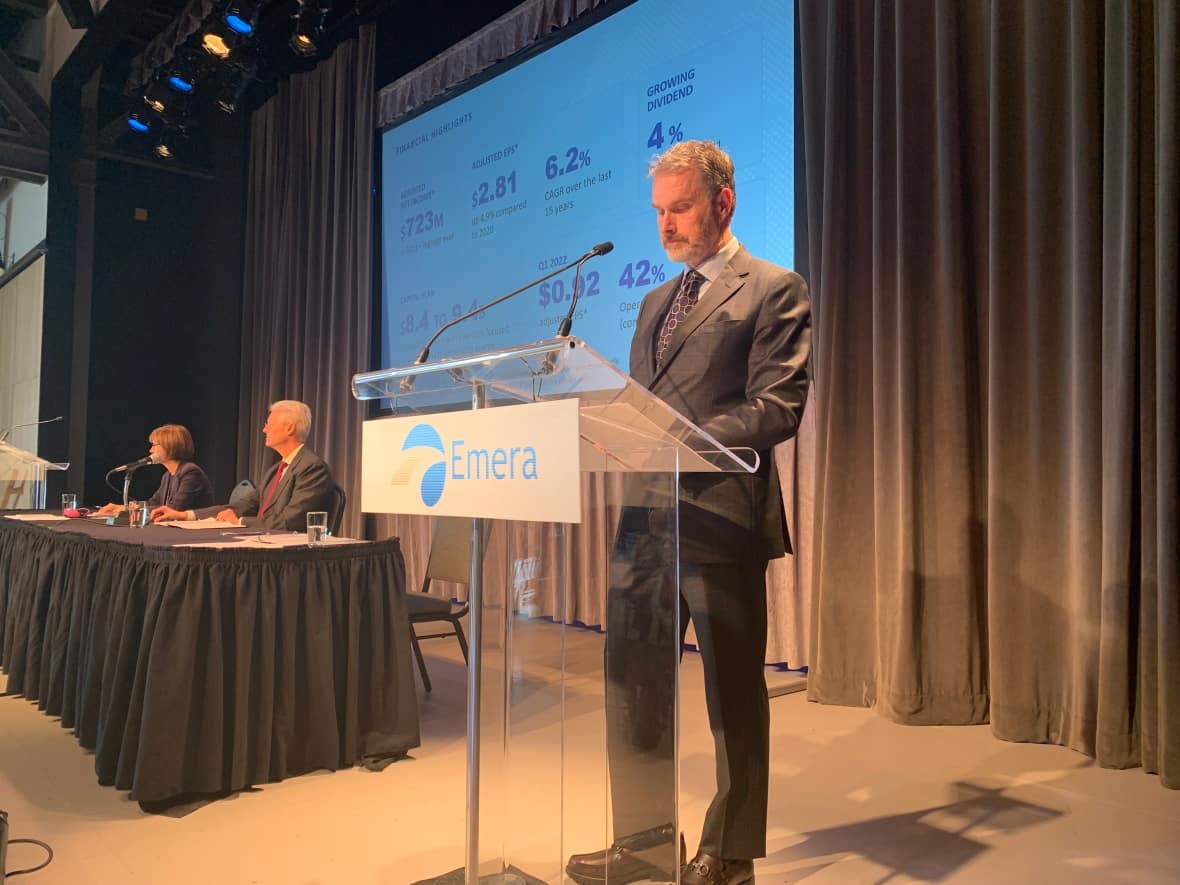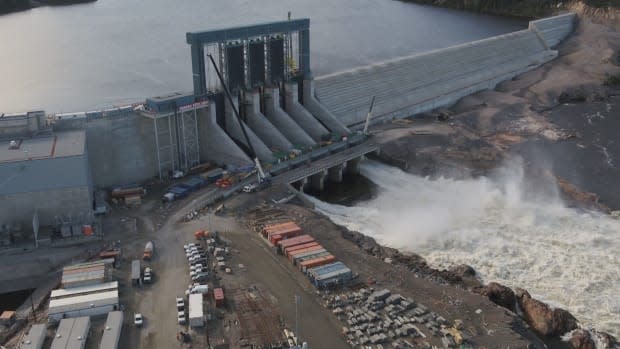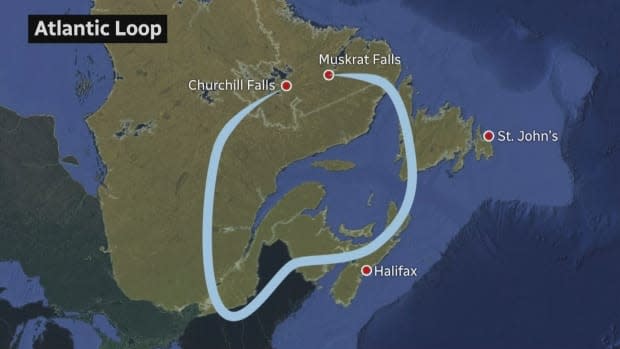Emera CEO sheds light on Nova Scotia Power's proposed rate hike

Emera CEO Scott Balfour defended an element in a proposed Nova Scotia Power rate hike Thursday that will cost customers more because of how the company is looking to finance projects.
He also offered a sobering assessment of efforts to make the province's electricity grid greener, including news that delivery of Muskrat Falls hydro electricity is "inconsistent" and may take months to sort out.
Balfour was speaking to reporters after Emera's annual meeting in Halifax, where shareholders celebrated an 11.5 per cent return over the last three years.
Balfour was asked about a potentially costly element in NSP's general rate application.
The Emera subsidiary wants regulators to increase the proportion of shareholder money it can use to pay for capital projects from 37 to 45 per cent.
Why does it matter?
If approved, it would allow Nova Scotia Power to earn a nine per cent rate of return on 20 per cent more of the money it spends on capital projects.
For consumers, it would mean paying a nine per cent rate of interest rather than the much lower rate when the company borrows the money from the bank.
Balfour said Nova Scotia Power is only asking for what other utilities are allowed.
"The proportion of debt versus equity is actually among the lowest on the continent," he said.
"If Nova Scotia Power isn't generating a competitive return for Emera shareholders, it gets very hard to be able to attract that capital so that those investments can be made on behalf of Nova Scotians in order to achieve the vision and the expectations that we all have of cleaner energy and more reliable energy," he said.
Why consumers would lose
If approved by the Nova Scotia Utility and Review Board, the increase could generate millions of dollars more for shareholders at the expense of Nova Scotia Power's 530,000 consumers, who are already staring at an expensive transition from coal-fired generation. That is required to meet a provincial government requirement that 80 per cent of electricity is to come from renewable sources by 2030.
The rate application will go before the regulator at hearings in September.
Ratepayers are already committed to pay Emera $1.8 billion over the next 35 years for the Maritime Link.
Emera built the overland and subsea transmission system — on time and on budget — to carry at least 20 per cent of electricity generated by the Muskrat Falls hydro dam in Labrador into Nova Scotia.

It is supposed to supply about 10 per cent of Nova Scotia electricity requirements.
But Emera's Newfoundland partner, Nalcor, is years behind schedule and billions over budget.
Deliveries of the so-called Nova Scotia Block only arrived in 2021, four years late, and have not been regularly delivered.
CBC News revealed earlier this year that delivery stopped entirely for a month because of still unresolved software issues in Newfoundland Labrador.
"We're seeing that the Nova Scotia Block is delivered on most days now, just not consistently every day," Balfour said.
He said on some days Nalcor is even delivering additional energy to meet contracted amounts.
"But we're not yet in a place where we're seeing the Nova Scotia Block energy delivered consistently every day. And we're working hard with Nalcor in order to see that over the next couple of months."
Renewables target
Emera is also promoting the Atlantic Loop as a way to increase the use of renewables to meet the 2030 renewable electricity target.

The Atlantic Loop would upgrade grid connections between Nova Scotia and New Brunswick and New Brunswick and Quebec to allow the movement of hydro electricity in a loop from Newfoundland and Labrador, Quebec and the Maritimes.
The project has been estimated at $5 billion by politicians.
Balfour wouldn't predict the cost Thursday.
Cost sharing between the utilities, provinces and the federal government has not yet been worked out.
"We certainly were hoping that we'd have more clarity sooner for sure," Balfour said.
"The investments take a long time. There's there's regulatory processes to go through. There's design and construction efforts to go through. And so we need to have clarity by the end of this year in order to be in a position to be able to achieve that 2030 target."
Ottawa says we're working on it
The federal government says Canada, Quebec, the Atlantic provinces and their respective utilities continue to meet to discuss options to advance the project.
Five work streams have been initiated with provinces and utilities to advance discussions on technical and financial aspects.
Natural Resources Canada has committed money to clarify project costs, examine system reliability, sort through regulatory requirements and identify environmental and community engagement issues, according to spokesperson Stephane Shank said.
Meanwhile, Balfour admits Nova Scotia Power is struggling to meet a provincial goal to generate 40 per cent of electricity from renewables over a three-year average by the end of the 2022.
"It's very challenging right now," he said. "And that's why we're very anxious to ensure as much delivery over the Maritime Link as possible from that clean energy from Muskrat Falls."
He said moving to a low-carbon future will require small investments and big investments.
"We are not going to be able to retire the coal plants in Nova Scotia with solar panels and batteries alone," he said.
MORE TOP STORIES


